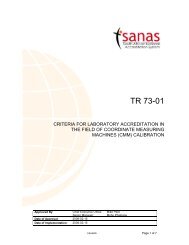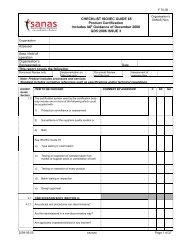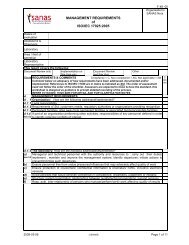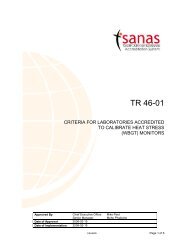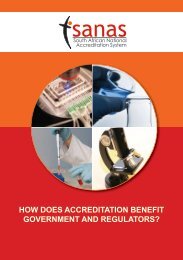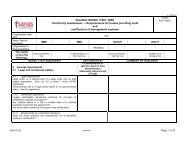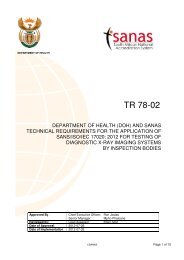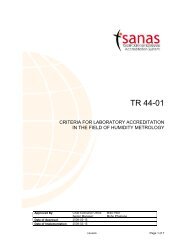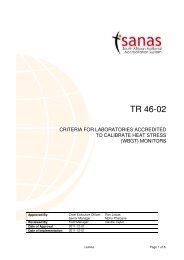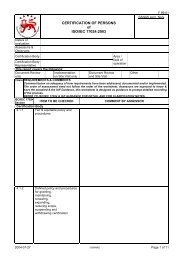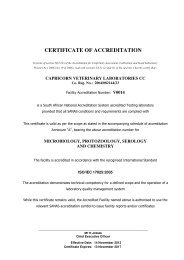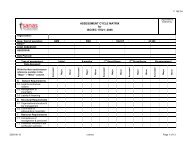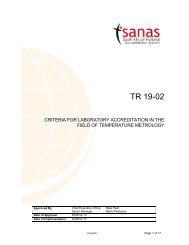TR 07-02 - Sanas
TR 07-02 - Sanas
TR 07-02 - Sanas
- No tags were found...
You also want an ePaper? Increase the reach of your titles
YUMPU automatically turns print PDFs into web optimized ePapers that Google loves.
<strong>TR</strong> <strong>07</strong>-<strong>02</strong>t) To minimize the possible effects of trees on the measured SO 2 levels, thesampler inlet should be placed at least 20m from the drip line of trees. Insituations where trees could be classified as an obstruction, i.e. the distancebetween the tree(s) and the probe inlet is less than twice the height that thetree(s) protrudes above the sample inlet, the inlet must be placed at least 10mfrom the drip line of the obstructing tree(s).u) Temperature and Humidity• A monitoring station requires a suitable environment with specificenvironmental conditions.• Cognisance must be taken of the ambient external conditions with regardto dew point.• Shelter temperature must be controlled at 25 °C ± 5 °C.• Should the temperature rise to above 30 °C, the data must be flagged forpossible erroneous results.v) Sampling Lines• In order to ensure adequate sampling response time the sampling linesshall be Teflon.• They must be in one piece with no additional traps and filter mechanismsallowed and should preferably be no longer than 2 meters in length fromthe manifold to the analyser.• They must be at least 6mm outer diameter in width.w) Sampling Manifold• The sampling manifold must be made from borosilicate glass or FEPTeflon or their equivalent.• The sample residence time within the manifold must be less than 20seconds.4.4 Meteorological Requirements4.4.1 Meteorological conditions are important in assessing the impacts of sources onsurrounding areas because they dictate the transport and dispersion of contaminantsin ambient air.4.4.2 The minimum meteorological parameters to be measured and reported at the samefrequency as the primary pollutants are: wind speed, wind direction and ambienttemperature:• mast, 6 m minimum, 10 m preferable;• wind speed (resolution 0.1 m/s, accuracy ± 0.2 m/s, start-up 0.2 m/s);• wind direction (resolution 1°, accuracy ± 2°, refe renced to true north);• air temperature (resolution 0.1°C, accuracy 0.2°C) ;• automated logging system, reliable power, with battery back-up.4.4.3 The use of the Cartesian coordinate system is recommended, whereby data isconverted to its x and y components. This data can then be accumulated in a vectorform. This solves averaging and unweighted direction problems. Results maysubsequently be converted to polar coordinates, if required.©SANAS Page 6 of 12



